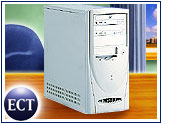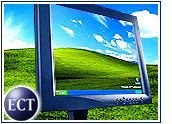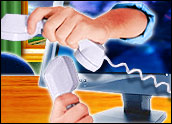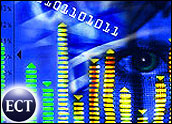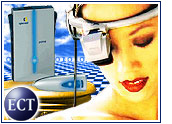
Computing is moving out of the office and heading for the living room, the coat pocket and the car. In a convergence with traditional home entertainment, computing and telecommunications technologies are starting to weave together a pervasive mix of “lifestyle” products and services. In the near future, if some visionaries have their way, the personal computer will serve as the command-and-control center for devices to play audio CDs and DVD videos, view and download streaming video, download music, play video games, listen to online radio and burn music to CD.
According to Yankee Group analyst Aditya Kishore, such so-called media-center PCs will account for 22 percent of PC purchases by 2007. Dell and Gateway are particularly active in this field. Competing for the consumer dollar, companies such as Samsung, Pioneer and Panasonic are developing intelligent devices to do the same things, and firms like Cisco are developing wireless home networking solutions to link everything together.
Much of the trend in multimedia over the past decade has been to squeeze everything into one device — the PC — and use it as a one-stop presentation center. But that involves compromises at every step: compromises in quality, compromises in convenience and control, and limits on bandwidth and portability.
“I think it’s much more likely that we’ll see a proliferation of devices for consumers,” said Internet pioneer Marc Andreessen. “Just look at the evolution of the kitchen. If everything converged into one appliance, we’d have a machine that did everything in the kitchen, instead of separate dishwashers and stoves and refrigerators.”
True Multimedia?
Andreessen echoes a refrain long sounded by some players at the big end of presentation technology. The founders of Dataton, a Swedish equipment maker that got its start 30 years ago in the conference and exhibition industries, have always said that specialized devices do a much better job of delivering rich media content than the PC, with its jack-of-all-trades design.
A good hi-fi, for instance, gives bigger, better sound than those boxy little speakers attached to your computer. The same goes for visual devices. The problem is in integrating and controlling these specialized machines.
Dataton produces computer software and hardware interfaces to program and drive multiple banks of slide projectors, DVDs, VCRs, data projectors and ultimately an array of devices from pyrotechnics to robots to lights and curtains. Dataton calls this “true” multimedia. But Dataton’s products are aimed at professional audiovisual producers. What about consumers in the home? We’ve been promised things in the past — like interactive television — that by and large have not taken off.
But today, developments in four different areas — traditional computing, digital video and audio, wireless communications and intellectual property concepts — are creating new synergies.
Driving the Move
The move toward integrating computer technology into home entertainment is driven by several factors. First, more and more content, from every possible source, is being digitized — that is, if it’s not already produced in digital form. Second, the pervasiveness of the Internet, streaming technologies and the increase in broadband access for large populations worldwide offer huge opportunities for content distributors and game producers. Finally, the push to smaller and smaller hardware that requires less and less power makes devices and techniques — previously thought impractical — possible.
A good example of this last trend is the hard disk. Toshiba raised the bar when it released high-capacity 1.8-inch diameter drives. According to Alfred Hermida, a BBC News online technology editor, “the number of hard drives in consumer electronics gadgets is set to jump from 17 million last year to 55 million in 2006.”
Computer users who have recently experienced a bad computer hard disk crash might be less than thrilled at this prospect. But industry spokespersons say reassuring things: Nick Sprittle, head of Toshiba’s hard disk drive business in Europe, has remarked that “all these devices have an expectation of ruggedness” and “in the home the worst-case scenario is that you have lost a copy of Mission: Impossible.”
That may be true for passive consumers, but that’s not the whole model being proposed. Much of the marketing hype we hear revolves around the creative capabilities of the new media — you as documentary filmmaker, for example. But what if a disk failure eradicated your wedding video or your kid’s first words along with Tom Cruise in Mission: Impossible?
Creativity and Ownership
That same Toshiba disk is crucial to one of the key elements of digital home entertainment, which also illustrates the shifting goalposts of media distribution. The little Toshiba disk is quite expensive, and they weren’t flying off the shelves until Apple decided to put them in the iPod.
Apple says it has now sold 2 million — US$345 million worth — of the diminutive music players, garnering 25 percent of the portable music player market. A recent deal that will see HP selling rebranded iPods is expected to increase that share.
The other half of the iPod success story bears on content distribution models and digital rights management. When Apple announced its iTunes online music store, with legal 99-cent song downloads from all the major labels, many scoffed at the business model. But the company sold a million songs in the first week, and now other online content providers are lining up to join the party.
The digital entertainment market is worth billions and involves players from many sectors of the entertainment industry as well as computer makers. Right now, it’s in a state of flux, and there are so many factors at work that it’s hard to predict how consumers will jump.
Will they go for ideas like Sony’s PlayStation 3 — to be released next year — which is intended to use permanent broadband access not just for online gaming, but also to harness “cell” computing to distribute complex graphic animation tasks across many computers around the world? Or will consumers stick to stand-alone devices like the personal DVD players now offered by hundreds of manufacturers nobody has heard of?
The answers, when they come, will be very entertaining indeed.


